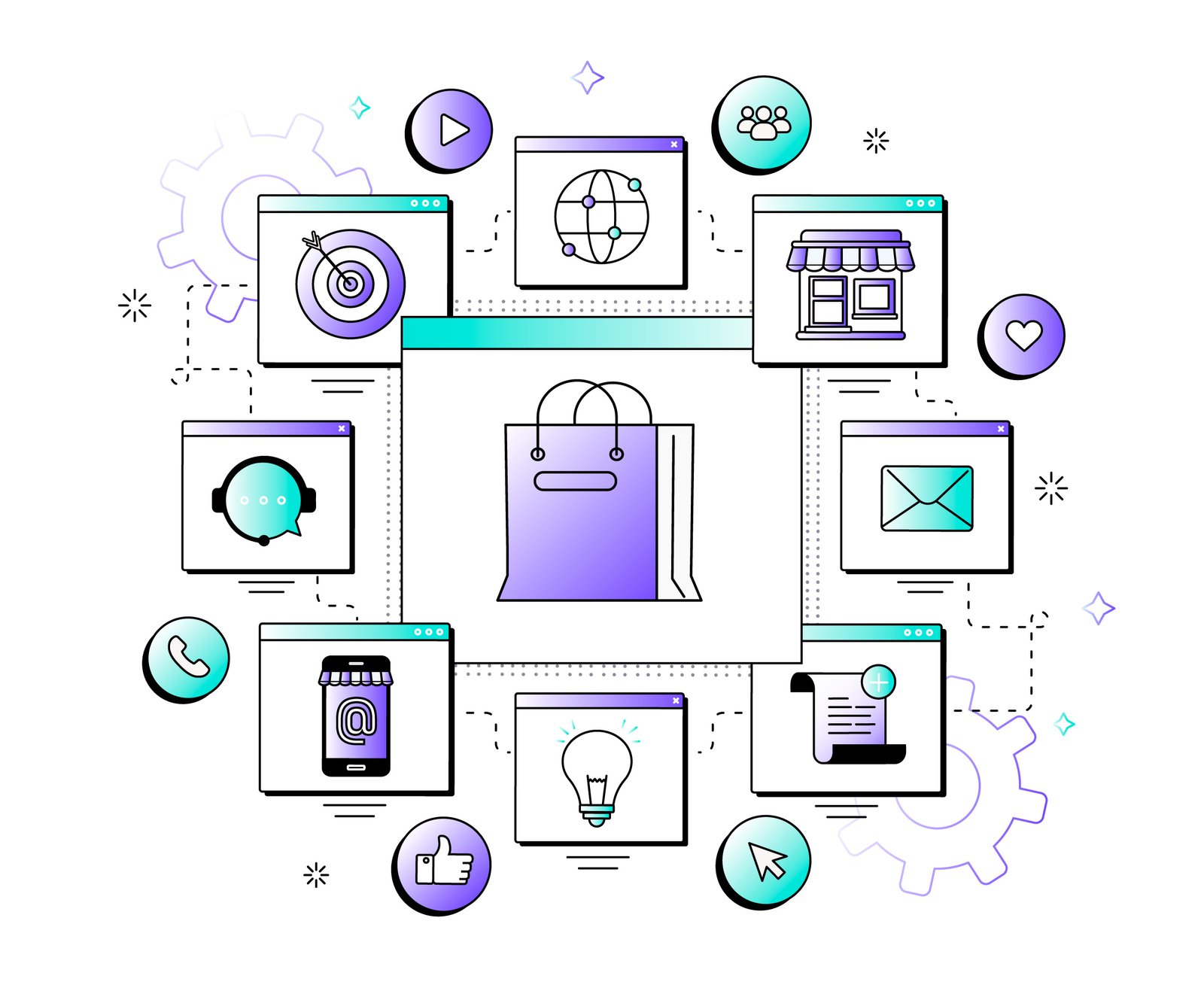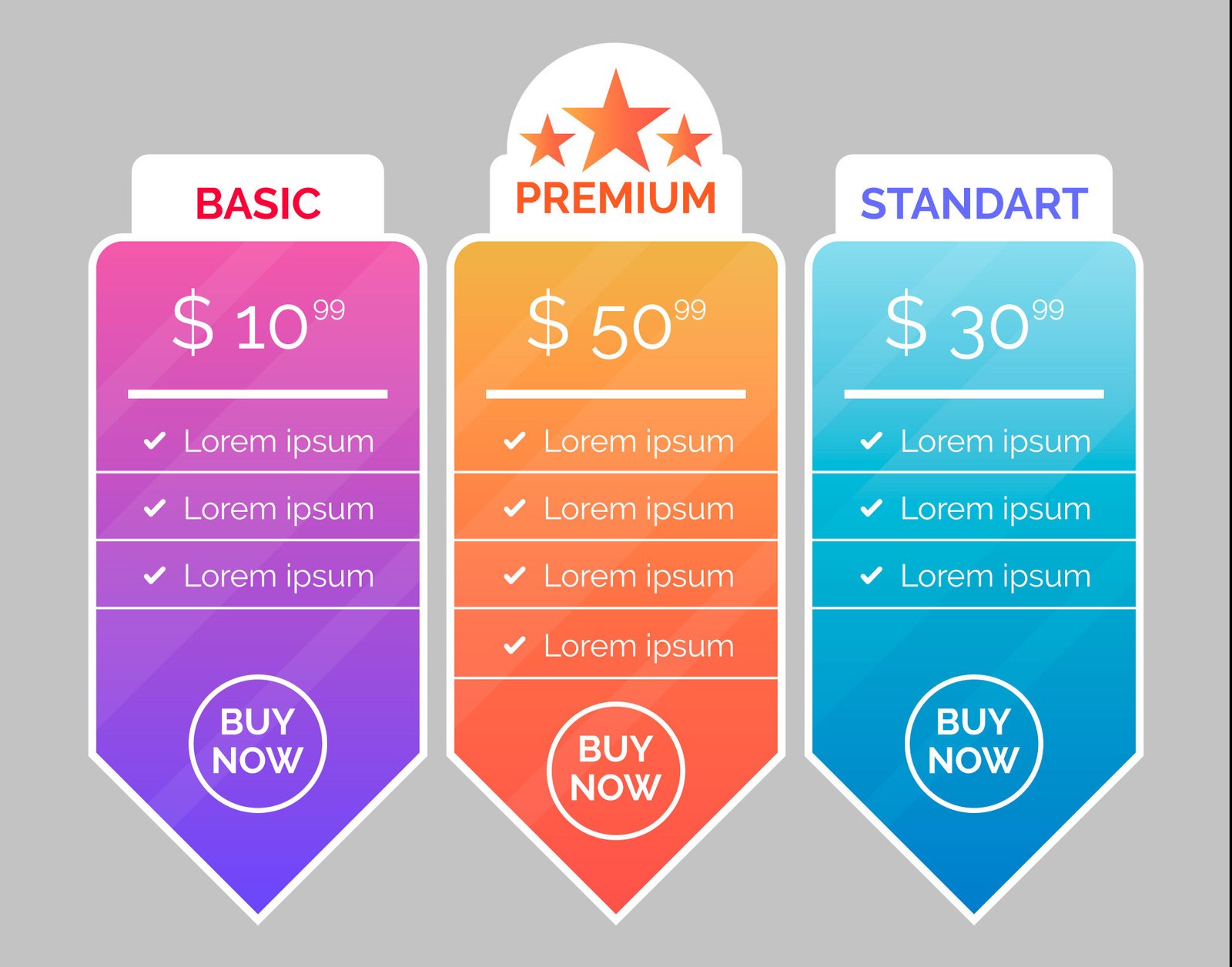The digital marketplace of 2025 is changing faster than ever, and businesses need resilient ecommerce platforms that match their goals and day-to-day needs. Let’s get into the standout features and key differences of today’s best ecommerce solutions.

Ecommerce Platform Comparison Guide for 2025
Published by abraham • June 5, 2025
Ecommerce now represents over 20% of all retail sales globally, and your platform choice directly impacts everything from customer experience to operational efficiency. Shopify’s commanding 28% market share—supporting 2 million merchants across 4.6 million websites—illustrates how businesses are increasingly turning to specialized platforms rather than building from scratch. But is the market leader always the right choice for your specific needs?
Finding the perfect match between your business requirements and platform capabilities requires careful evaluation. Price points vary dramatically, feature sets differ in ways that might not be immediately obvious, and scalability concerns that seem distant today could become urgent tomorrow. This blog cuts through the marketing noise to provide a side-by-side comparison of today’s leading ecommerce platforms, giving you the practical insights you need to make a decision that will serve your business well into 2025 and beyond.

Shopify leads the pack in 2025 with more than 4 million active stores worldwide, and the platform shines with its high-converting checkout system, delivering 15% higher conversion rates. Mobile conversion rates are also 91% higher compared to standard checkouts. Plans start at $5 monthly, and provide user-friendly interfaces, secure hosting, automatic updates, and round-the-clock customer support. The platform has 8,000+ third-party apps to improve functionality without complex API systems. Shopify Magic, the platform’s AI tool, helps create product descriptions, email marketing, and handles other business tasks.
BigCommerce stands tall as an enterprise-ready SaaS platform built to grow. Companies using BigCommerce see profits in eight months and achieve a 211% ROI after three years. Users get multiple storefront support, unlimited products, and 24/7 support through live chat and phone. The platform gives brands both native features for plug-and-play use and flexibility for headless commerce. However, plans include sales-level caps, and the interface isn’t as user-friendly as others.
WooCommerce, a free WordPress plugin, rules the content-first ecommerce space in 2025. Users get full WordPress flexibility, prominent SEO plugins like Rank Math and Yoast, and lots of plugin options. Built-in blogging tools, thousands of WordPress plugins, and great international ecommerce support make it stand out, but unlike other platforms, WooCommerce needs hosting, SSL, and basic technical skills. Content-focused stores, tech-savvy users, and SEO-heavy brands will find it more useful.
Wix has grown into a powerful tool for small businesses and freelancers who want simplicity. The platform supports 50,000 products and merges in-store and online sales through its POS system, and users can sell across social media and marketplaces like Amazon and Facebook. Wix makes ecommerce available to beginners with its drag-and-drop builder, pre-built templates, and budget-friendly plans, but the platform’s limited backend control makes it less suitable for bigger operations.
Adobe Commerce (Magento) serves large enterprises with complex product catalogs. The platform gives users custom development options, enterprise scalability, and global ecommerce support, and businesses can fine-tune every step of the buyer’s trip thanks to its open-source architecture. Advanced SEO features, URL rewrites, canonical tags, and multilingual support are its strong points, but expert developers are needed and management costs can run high.
Squarespace, known for its beautiful design, works best for creative businesses and service providers. Users get stunning templates, built-in content tools, and easy management features, and the platform’s Acuity Scheduling tool helps businesses offering consultations or classes. All plans come with unlimited storage and products, and almost 3 million active websites use Squarespace, including brands like Skillshare and Vimeo.
Ecwid by Lightspeed stands out by letting businesses add a complete store to existing websites. Users get 70+ payment options and a PCI-DSS level-1 security certification. The platform removed its free plan recently, and now the starter plan costs $5/month with basic features. Better plans offer live chat and callback phone support.
Medium to large enterprises benefit from Salesforce Commerce Cloud’s complete cloud-based ecommerce solution. AI and analytics features create personalized customer experiences, and the platform manages inventory, orders, and customer data while working smoothly with other tools. Businesses can connect commerce with marketing, sales, fulfillment, and service for a unified customer experience.
PrestaShop runs nearly 300,000 sites worldwide, leading Europe and Latin America. Users get complete features like multi-language support, advanced SEO tools, mobile optimization, and analytics. The open-source design allows extensive customization through modules and themes without extra fees. Small to medium-sized businesses looking for economical solutions will find PrestaShop more useful.
Key feature differences play a vital role in evaluating top ecommerce platforms in 2025. This comparison highlights the aspects that affect merchant success and customer experience.
An ecommerce platform’s usability affects daily operations, as merchants can manage their stores without technical knowledge through accessible interfaces. Market research shows that 88% of first-time users abandon sites they find hard to use and never return. The best platforms come with simple backend management systems and drag-and-drop editors that make store setup quick. Shopify and BigCommerce give businesses ready-to-use foundations with minimal technical setup needed.

Great customer experience drives conversion rates, with 42% of buyers ready to pay extra for it. Leading platforms offer customizable templates with varying customization levels. BigCommerce gives business users simple drag-and-drop Page Builder tools and developers get open API architecture for detailed customization. Product customization has become increasingly important, as one in five customers will pay 20% more for personalized products.
Merchants save time and money with integrated marketing features. Email marketing drives results—abandoned cart emails generate 3x more conversions than other automated campaigns. Leading platforms now include tools aimed towards social media marketing, email campaigns, and on-page SEO optimization. AI tools have evolved, and platforms like Shopify use them to create product descriptions and marketing content.
Limited payment options make 13% of customers abandon their carts. Modern platforms support various payment methods beyond credit cards, including digital wallets and “buy now, pay later” options. BigCommerce leads with over 65 pre-integrated payment options that serve 230 countries and more than 140 currencies. PCI compliance and fraud protection have become basic features rather than premium add-ons.
Customer satisfaction depends on quick fulfillment processes. The best platforms combine smoothly with major shipping carriers and shopping carts through APIs and integrations. Amazon’s Multi-Channel Fulfillment connects with over 100 ecommerce solution providers like Shopify and BigCommerce. Platforms now track inventory across multiple locations and generate shipping labels automatically.
Mobile devices generate 62.23% of web traffic, while desktop accounts for 35.9%. Mobile ecommerce sales hit $2.2 trillion in 2023, making up 60% of global ecommerce sales—this number could reach $3.4 trillion by 2027. Platforms must create responsive designs that fit different screen sizes and devices. A single second delay in mobile page response can reduce conversions by 7%.
The financial commitment required for ecommerce platforms to operate can affect your bottom line substantially. Getting the full picture requires looking at both advertised costs and the less obvious expenses that build up over time.
Monthly subscription fees show huge differences between platforms. Shopify plans cost anywhere from $5 to $2,300 per month based on what your business needs. WooCommerce takes a different approach by offering its core plugin free, while requiring extra infrastructure. BigCommerce starts at $39 monthly and goes up to $399 for advanced features. Wix ecommerce plans range from $17 to $159 monthly depending on business size. Squarespace fits in the middle, with plans from $16 to $49 monthly.

Transaction fees stand out as one of the biggest hidden costs merchants face. Shopify takes between 0.5% and 2% per transaction, unless you use Shopify Payments. Similarly, Squarespace’s business plan comes with a 3% transaction fee on orders, though you won’t pay this on higher-tier plans. Payment gateway costs apply to everyone—usually 2.9% plus $0.30 per transaction for services like Stripe and PayPal.
The base subscription rarely shows you the total cost—many platforms put key features behind paywalls through their app marketplaces. To name just one example, Shopify merchants often need several paid apps to get full functionality, which can add hundreds to monthly costs. WooCommerce extensions cost between $50 and $200 each, and Shopify and Adobe Commerce extensions can set you back anywhere from $50 to $800.
Domain names usually cost $10-$30 yearly, while hosting costs vary by platform type. Self-hosted options like WooCommerce need separate hosting that runs from $7.99 monthly for basic service up to $2,000 monthly for high-traffic stores. SaaS platforms include hosting in their subscription fees and usually offer unlimited bandwidth and SSL certificates.
Maintenance costs catch many merchants off guard—small stores might spend $250-$500 monthly while large operations can face bills of $2,500-$10,000+ monthly. These expenses cover security updates, performance optimization, error fixes, and regular software updates that keep online stores running smoothly and securely.
The ideal digital storefront connects your business needs with the platform’s strengths. Different ecommerce solutions suit different types of businesses.
Small startups with tight budgets need platforms that are simple and affordable. Shopify dominates ecommerce like Google dominates search, giving small and medium-sized businesses enterprise-grade tools. Squarespace makes things easier by removing technical hurdles while keeping stores looking professional, and Big Cartel gives you a low-cost, simple way to set up online stores. Wix shines with its accessible interface and built-in marketing tools that automatically optimize stores for mobile.

BigCommerce stands out by serving businesses of all sizes—from small companies to large enterprises. One expert says it well: “If your startup turns into the next Apple, BigCommerce can stay with you the whole time, from training wheels to global sensation.” Adobe Commerce (formerly Magento) lets businesses run multiple storefronts in a variety of brands or regions from one platform with advanced B2B features, and Salesforce Commerce Cloud makes omnichannel retail smoother through a single centralized tool.
Physical stores moving to ecommerce love Square Online—it works smoothly with Square’s point-of-sale system for both in-person and online sales. Recent studies show physical retailers now see online stores as crucial, not optional. Shopify and BigCommerce excel at omnichannel features like “buy online, pickup in-store” that boost foot traffic and make shopping convenient.
B2B ecommerce deals with complex transactions, higher order values, and a smaller customer base. Adobe Commerce and BigCommerce Enterprise work great for B2B with features like customer-specific catalogs, custom pricing, and detailed approval workflows. B2C platforms focus on looks and easy checkout, with Shopify and Wix delivering excellent consumer experiences.
Picking an ecommerce platform needs careful review instead of quick decisions. The wrong platform can drain your budget and limit growth, while the right choice builds a stable online presence that keeps customers happy.
Start by figuring out if you sell to customers (B2C), other businesses (B2B), or both. Set your short and long-term goals clearly. To cite an instance, if you plan to sell in new markets, your platform should handle foreign currencies and cross-border taxes. You need to know your target audience’s needs before you compare platforms.

Your platform needs a payment gateway to process online sales, so figure out which payment methods your customers prefer—credit card, PayPal, or digital wallet. The platform should work with your preferred shipping carrier and connect to a third-party shipping provider. Web hosting, security certificates, and store builders are basic features you can’t skip.
Pick a platform that grows with your business. Even small stores should get an ecommerce platform that scales up easily. A good platform handles traffic spikes without slowing down—what happens if your products get viral attention? Big businesses might need multiple storefronts running from one backend.
Technical problems make quality support a vital asset. Platforms offering 24/7 US-based live support and detailed help centers prevent expensive downtime. Small businesses lose up to $25,000 each hour during outages. Break down the platform’s support resources before you decide—they should help you throughout your ecommerce experience.
Hands-on testing gives you the best insight—most platforms let you try their service free for 14 to 60 days without a credit card, so use this time to test how the platform works, what features it has, and how it performs in real situations. This testing will show if your team can work well with the interface.
Picking the right ecommerce platform is one of the most vital business decisions retailers face today. Our comparison reveals several key factors you should think about for 2025 and beyond.
Shopify leads the pack with its accessible interface and rich app ecosystem. BigCommerce shows promising ROI potential for growing businesses. WooCommerce remains the preferred choice for content-focused stores. Wix works best for small businesses looking for simplicity. Magento shines when handling complex enterprise catalogs. Squarespace catches the eye of design-conscious brands. Specialized platforms like Ecwid, Salesforce Commerce Cloud, and PrestaShop meet specific market needs effectively.
Look beyond simple functionality when making your choice. Features like ease of use, design flexibility, and marketing tools affect your customer’s experience and conversion rates directly. Hidden costs play a vital role too—transaction fees, app expenses, hosting needs, and maintenance can substantially change your total investment.
Your business goals determine which platform fits best. Startups do well with budget-friendly, simple solutions like Shopify or Squarespace. Large enterprises need robust platforms such as BigCommerce or Adobe Commerce. Physical stores moving online benefit from omnichannel solutions that connect in-store and online sales smoothly.
Take time to choose carefully instead of rushing your decision. Start by setting clear business objectives—list must-have features that match customer expectations, check if the platform can grow with your business, test available support resources, and use free trials before you commit.
The ecommerce world will keep changing after 2025, yet businesses that choose platforms matching their specific needs, growth plans, and customer expectations set themselves up for long-term success whatever the market does. The right platform creates a strong foundation for your digital commerce operation to grow and thrive.